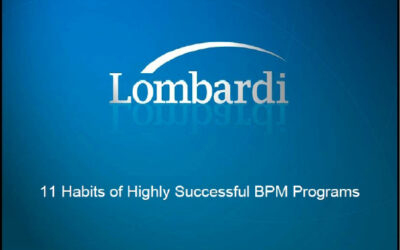When you grapple with a new idea, where do you start? Most people concentrate on the whole or the parts – either the entity that is the overall idea or the entities that compose it. That we approach ideas in this manner and don’t think about them instead as sets of relationships among components seems to be natural. Relationships, if we get around to them at all, are secondary considerations.
Articles by: BPMInstitute.org
Is SOA really a failure?
I recently came across an article titled “SOA is dead, long live services!” It grabbed my attention (in fact, it is subject of a very lively discussion in the blogosphere), and got me thinking about how SOA has come to reach the “trough of disillusionment” stage. I decided to put some thoughts together, a sort of “a posteriori” analysis of my own experiences. So, why do SOA projects fail? We have the usual litany of suspects: market over-hype, vendor “marketecture”, lack of skilled resources, funding, etc. But that would be too easy, maybe even a cop out.
Shaping Complex Ideas
Good ideas usually have system-like characteristics. That may seem strange, considering how we have been indoctrinated all our lives to believe great ideas are simple, complete and self-evident once conceived (think solutions to problems or opportunities for enrichment). Examples of these abound, many now urban legends.
Business / IT Collaboration Model: A Practical Approach
The collaboration between the business department and IT department of an organization has been subject to research by many organizational professionals. Some companies manage things very well, others have their problems. This article will not provide you with a silver bullet for business & IT alignment, but provides some practical directions for establishing a business driven collaboration.
Unlocking the Door to Web Service Security
Many companies have embraced the concepts of Service Oriented Architecture (SOA) at least to the point of creating a few Web Services that are consumed by different applications. Embracing the use of SOA often comes about when an Enterprise Architect is sitting in a kickoff meeting and the need to reuse some critical data foundation functionality, such as Customer Relationship Management (CRM) or Master Data Management (MDM)—through the use of a service interface rather than replication of a nightly batch feed—arises.
11 Habits for Highly Successful BPM Programs
The culture of an organization is a collection of habits, and habits have a powerful effect in business performance. Driving long-term business benefit and success with Business Process Management (BPM) often times requires companies to develop new and maintain existing habits.
Systems Engineering for the Process Age – Creating systems to adapt to agile business
In the previous article “Process-oriented Systems Paradigm for the Process Age”, I discussed the concepts that will shape process-oriented systems in the Process Age. In this article I will discuss how these concepts influence the development of systems. Some of the terms used here have been described in the previous article.
-o00o-
Enterprise Change Equations
1. Approaches to ECE.
The change of such a complex system as Enterprise has to be considered at least from three perspectives:
- The philosophical equation of inevitable change.
- The business equation of embracing vs. ignoring change
- The human equation of Enterprise change success.
The Business Process Management DNA, a need for the “big picture”
A DNA carries the biological instructions that define, compose and create unique species. Molecules come together in a unique combination to form a “code” that defines a cell’s characteristics in an organism, and shape what the cell in intended to do. This article is not about genetic engineering, nor is it about medicine. However, it is about trying to lay out the DNA roadmap for what Business Process Management (BPM) should encompass in an organization.
Management Strategies for SOA
Management Strategies for SOA
The SOA consortium has been running an annual contest for the best SOA Case Studies. Last year I attended the event and summarized the common characteristics of successful SOA implementations. This year’s winners shared the same characteristics:
1. Strong executive level commitment2. Educate the business of the value of SOA3. Establish a Center of Excellence4. Well defined business services5. Completeness of services6. Sound quality assurance7. ROI realized over time






















